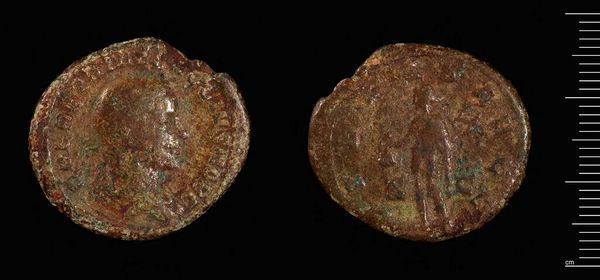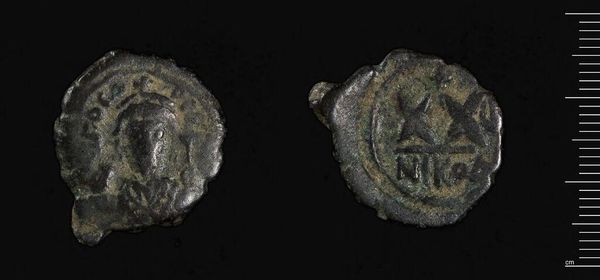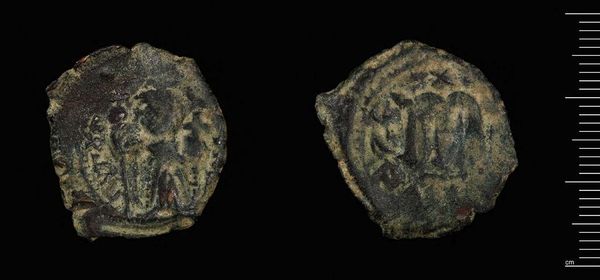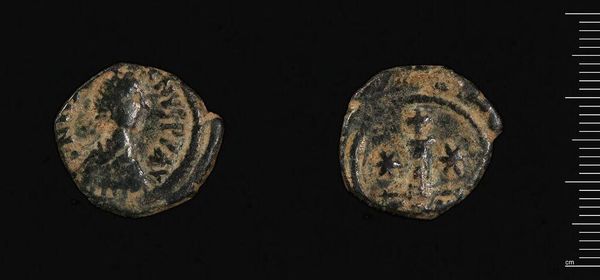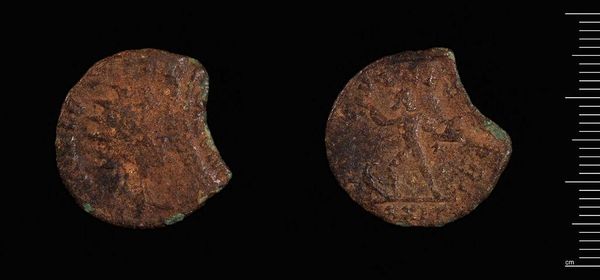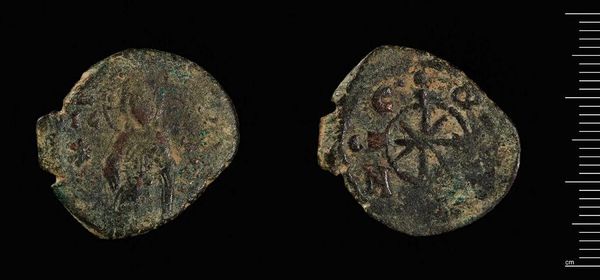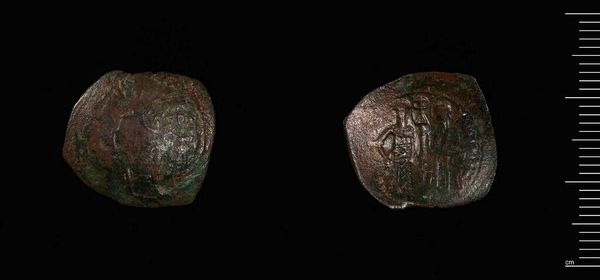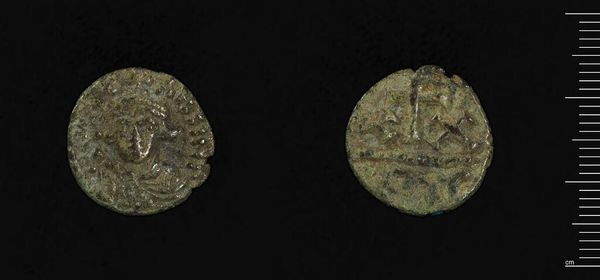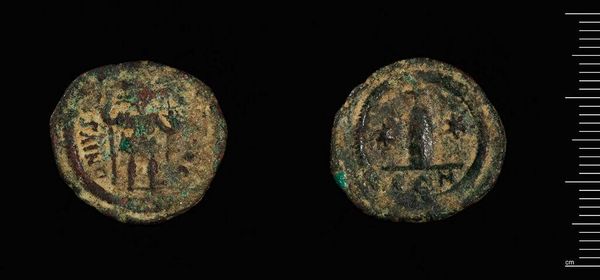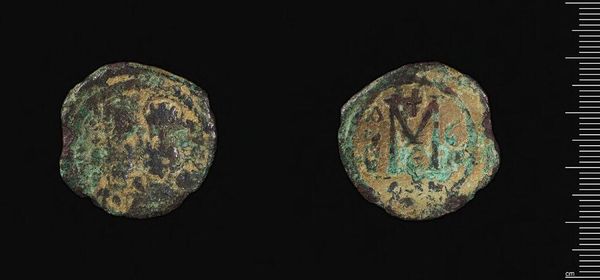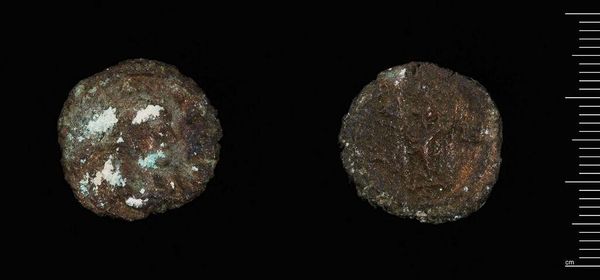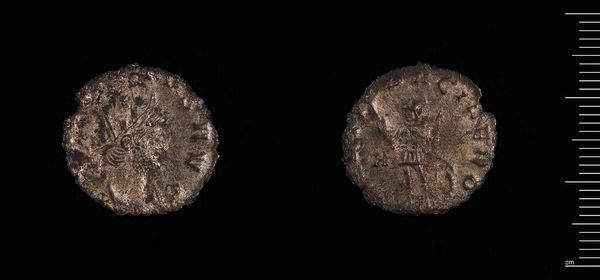
Dimensions: 4.55 g
Copyright: CC0 1.0
Editor: Here we have a Follis of Constans II from Constantinople. It is made of metal, although the exact composition is unknown, and it's quite small. Looking at the object, it's striking how worn down it is. What can you tell me about it? Curator: Well, focusing on the material aspects, consider the socio-economic implications. This wasn't some luxury good; it was everyday currency. The wear and tear speak to its extensive use, circulating through countless hands. The baseness of the metal itself tells us something about resource control at the time. Editor: So, it's less about the aesthetic value and more about what the object represents in terms of labor and economy? Curator: Precisely. What can be gleaned about the Byzantine economy, trade, and perhaps even the devaluation of currency through its materiality? What was the experience of the person striking these coins? Editor: That's an interesting perspective, reframing it from a symbol of power to an artifact of everyday life and labor. Thanks! Curator: My pleasure. I found myself pondering the work conditions of the mint workers and the environmental impact of mining.
Comments
No comments
Be the first to comment and join the conversation on the ultimate creative platform.
